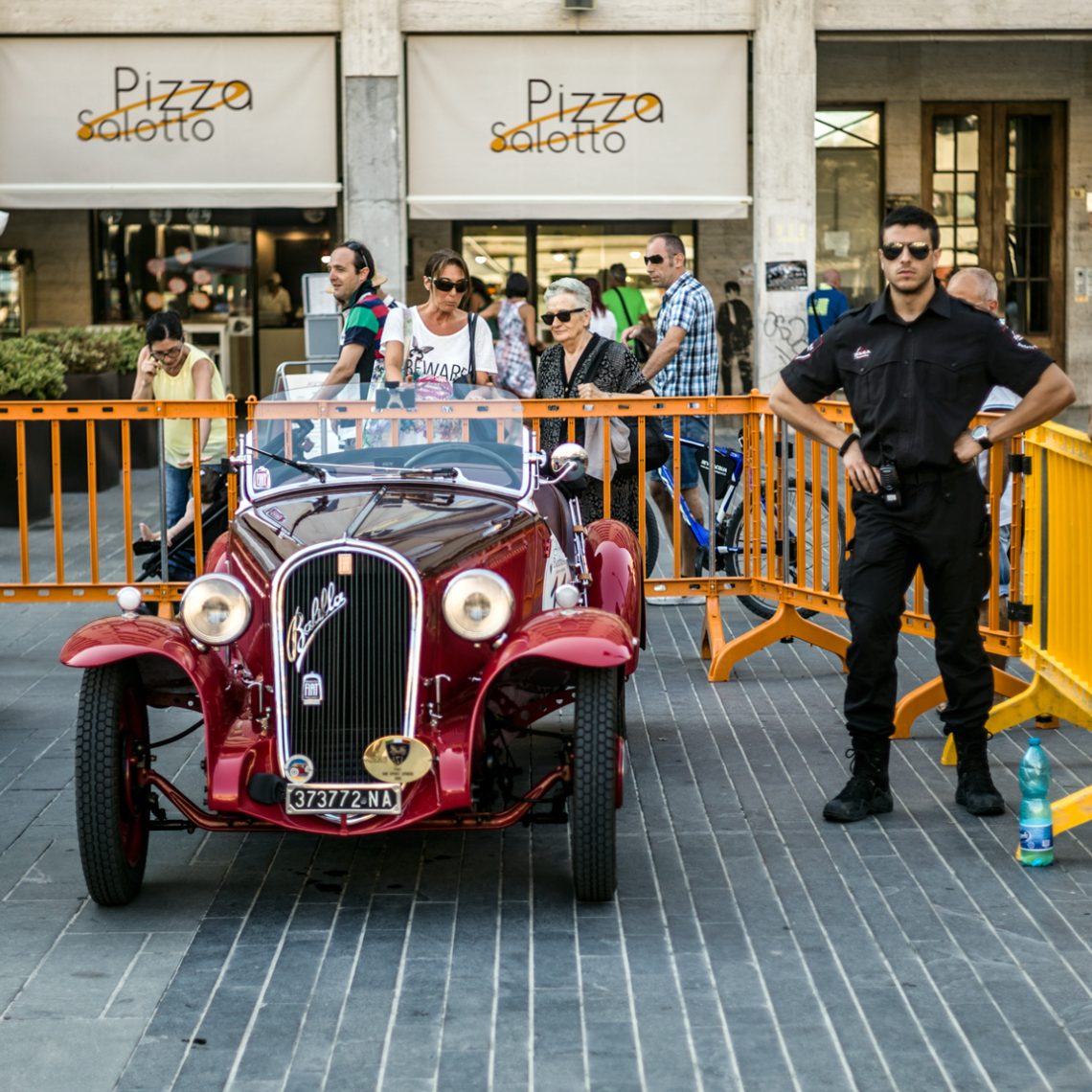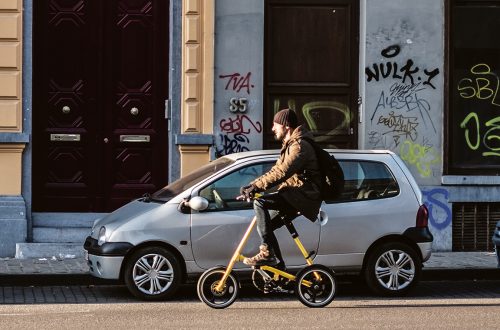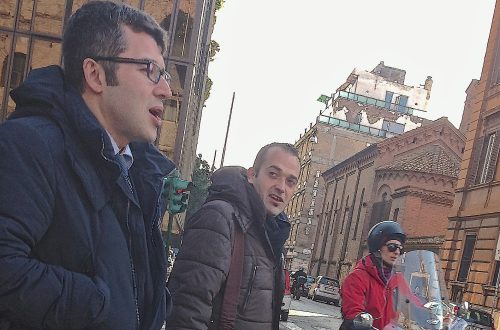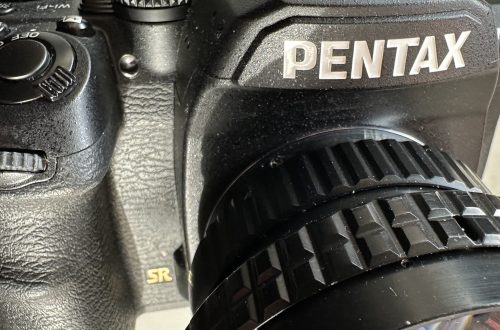
Balilla
Some cars don’t just roll into view—they make an entrance. This Fiat Balilla, polished to the kind of deep red you only get from decades of careful ownership, sits dead-centre in the frame as if the entire piazza has been rearranged to suit it. The symmetry is irresistible: the grille’s vertical bars, the balanced curve of the wings, the twin headlamps gleaming like theatre spotlights.
Composition
Framing here is deliberate and effective. The Balilla claims the central axis, with bright orange crowd-control barriers creating a vivid frame-within-a-frame. The people behind form a secondary layer, offering scale and a sense of place without competing for attention. It’s an image that works because it keeps the main subject unchallenged in the foreground while letting the background breathe enough to tell you where you are.
Exposure and Colour
Technically, the photograph is well-judged. The deep reds of the car’s paint are rich without being over-saturated, and the chrome details hold their highlights without blowing out. The colour palette is unexpectedly bold—red car, orange barriers, varied clothing tones in the crowd—yet it all balances thanks to the neutral stone of the piazza and the muted signage above. Sharpness is consistent across the frame, keeping both the car’s fine details and the background context intact.
Narrative Strength
There’s a celebratory quality to the image. The Balilla isn’t in motion, yet it commands presence as if it’s mid-performance. The casual stance of the onlookers suggests this isn’t a formal concours event but rather a public encounter, the kind of moment where heritage machines meet everyday life.
This is a photograph that respects its subject without turning it into an untouchable museum piece. Instead, it places the Balilla exactly where it belongs—on the street, in the open, ready to be admired by anyone who happens to walk past. A moment of mechanical history, perfectly at home in the present day.




